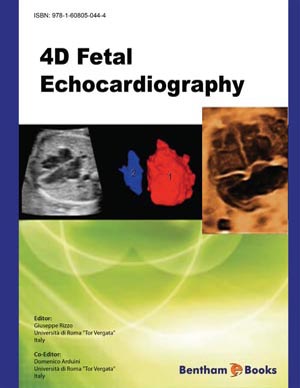Abstract
Real-time four-dimensional (4D) echocardiography is the examination of the fetal heart in the three spatial dimensions plus motion.The matrix probe’s technology allows direct volume scanning by electronically interrogation of a region of interest and acquisition of a pyramidal volume of ultrasonographic data. This technology has the potential to minimize motion artifacts associated with 3D/4D ultrasonography with a satisfactory spatial resolution.The system allows beam steering and focusing in the 3D volume dataset, making it possible to simultaneously examine two different planes of section of the same structure, in real-time, without resolution loss (Live xPlane imaging). The system achieves a pyramidal volume of data, creating a new real-time 3D moving imaging mode called Live 3D Volume Imaging, without the use of software-reconstructed section planes. Combination with Doppler techniques creates a new imaging option: Full Volume 3D imaging. The technique of Thick Slice Live Volume Imaging allows high resolution and contrast-enhanced images The strength of this technology is the easiness in obtaining real-time images of the heart, the high volumetric frame rate and the opportunity to obtain scanning planes with the same axial and lateral resolution. These features improve the overall understanding of anatomical structure arrangement. Matrix technology could be very useful in congenital cardiac clinical applications: real-time 3D echocardiography shows instantaneous rendered images of the beating fetal heart with complex pathologies in one complete heart cycle, and application of this modality allows its spatial location in the heart and its temporal location in the cardiac cycle.
Keywords: 3D Ultrasound, Fetal Echocardiography, Live Echocardiography, Matrix Probes.






















